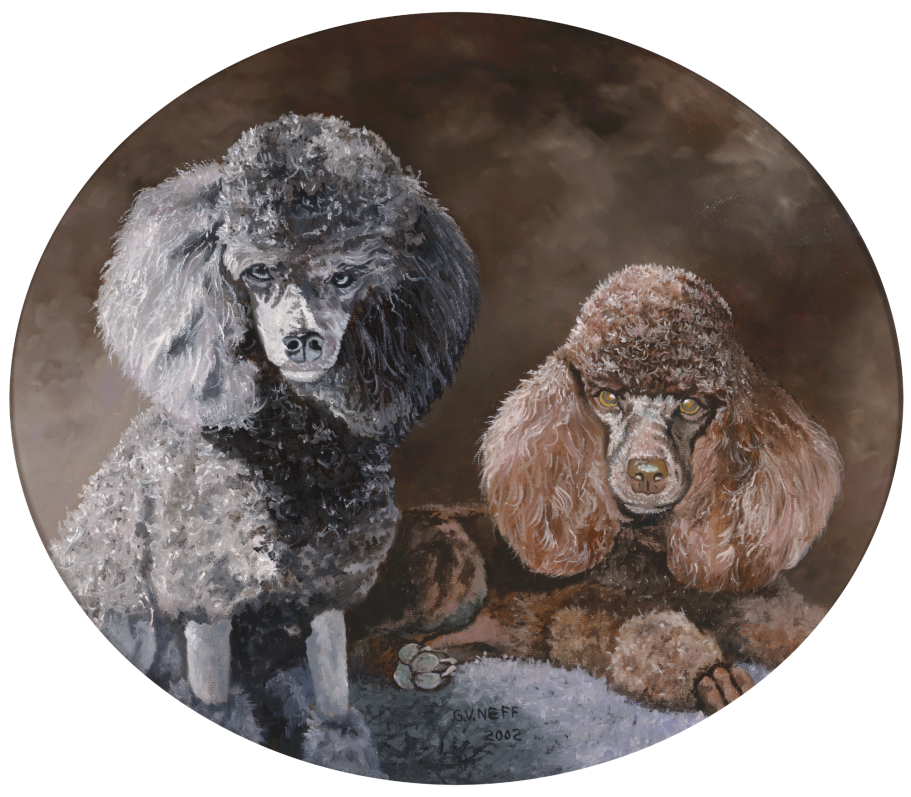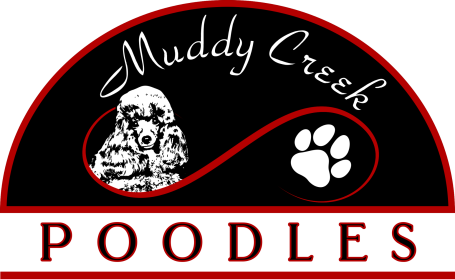Natural & Ethical Breeding

NO Tail Docking
At Muddy Creek Poodles, we leave our poodles’ tails natural. I used to dock tails because it was expected in the poodle world—buyers often thought docked tails looked more “poodle-like,” and I worried people wouldn’t see me as a serious breeder without it. But after going through the process with my first few litters, I knew I didn’t want to keep doing it.
One day, I stood over the whelping box, watching the puppies nursing, their tiny tails swirling like little helicopter blades. I dreaded taking each one away for the docking. As I carried them out, their mom waited in the box, stressed and calling for her babies. When I heard the puppies scream as their tails were docked, I knew that I couldn’t put another litter through it. After that, their tails never wagged quite the same. That day, I promised I’d leave my puppies’ tails natural from then on.
Now, all of my breeding poodles have beautiful, long tails, and I’ve grown to love the look. Breeders have been docking tails for decades, often without considering how they’d look or function naturally. Many countries now ban docking because of the pain it causes and because tails are important for balance, communication, and self-expression. Plus, let’s be honest—they’re absolutely adorable!
For those who want to know more about the impact of docking, here are some great resources:
NO Dewclaw Removal
At Muddy Creek Poodles, we believe that dewclaws, like tails, are best left natural. Removing them, much like tail docking, is often done for cosmetic or "practical" reasons, but it can actually impact a dog’s physical health over time.
Some people think dewclaws should be removed to avoid potential injuries, but in reality, dewclaw injuries are rare. Dewclaws are connected to muscles and tendons that help stabilize the leg during movement. Dr. M. Christine Zink, a specialist in canine sports medicine, has found that dewclaws play a vital role in preventing carpal arthritis and other joint injuries (see link below). In her experience treating over 30 performance dogs with severe carpal arthritis, only one dog retained its dewclaws, suggesting they offer a level of protection for high-movement dogs.
Dogs rely on dewclaws for stability, and removing them can lead to an increased risk of joint issues and arthritis, even though they might not show obvious signs of pain. Like tails, dewclaws have a purpose and contribute to a dog’s natural agility and well-being.
For more on the importance of dewclaws, check out these resources from Dr. Christine Zink and other experts:
We need your consent to load the translations
We use a third-party service to translate the website content that may collect data about your activity. Please review the details in the privacy policy and accept the service to view the translations.

